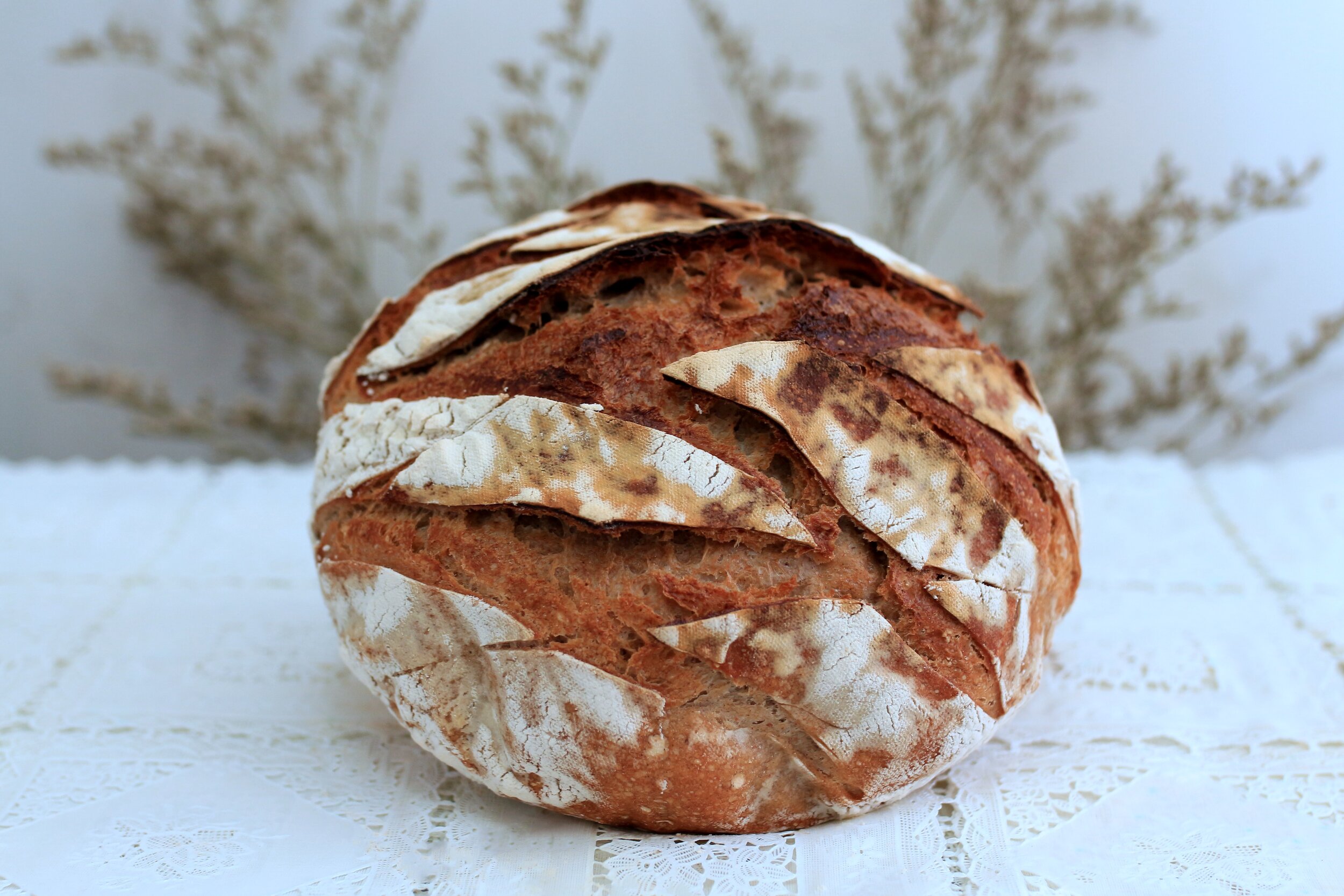This was going to be a guide on how to get started in baking, but as soon as I started thinking about writing that, all I could think is…
-
Who the hell am I to be writing a guide?
-
I barely know what I’m doing
-
I’m still learning and following guides myself
-
I’m no pro, I can’t write this
So…I took a step back. I thought, it would be far more appropriate to just go through a little of how I got started, what tools I use, and what my regular routine is nowadays.
How I got started
I loved cooking. Got into cooking for a multitude of reasons, which is good for another post one day. The important thing here is I was spending a lot of time in the kitchen, but I had no interest in baking. None. All I knew about baking was horror story after horror story about the precision required, how it’s exacting to a science, it takes practice, it takes patience, and it’s just hard. Cooking was easy to me, you have a recipe, you can riff on it a bit, you follow some basic rules, your nose, and your taste buds and you’ll typically be fine. Baking is different. It’s very different. But, having a sweet tooth, a love of cookies, and a passion for bread, I thought I’d give it a shot.
At this point the most I had was using either a cake or pancake mix and following the recipe on the back of the box. I wasn’t naive enough to think this made me baker, but I felt confident in my ability to follow a recipe, so I got a cookie recipe online, bought the ingredients, and went for it. After many struggles trying to get the dough off the spoon and on the tray, popped those bad boys in the oven and felt proud of myself. After a few minutes the apartment smelled delicious. My Google timer finished and I excitedly pulled the tray out of the oven. Hmmmm, they didn’t really darken much, but the edges are brown, okay…wait, the texture looks a little more hard and cracker-like than I was expected. It’s fine, it’s fine. I’ll let them cool and just bite into one. How bad could it be? Pretty damn bad. I ended up with hard shelled, mushy-centered cookies that tasted like they were just dough flavored with sugar. Cool. Well, I realized I don’t know what I don’t know and love that kind of challenge. Let the Googling begin.
I kept trying the same recipe until I got it right, and that is the first recommendation I’ll give. Find a simple, not-fussy recipe, and just keep trying it until you nail it. I experimented with different trays, using parchment paper or greasing the pan, amounts of sugar, the consistency of dough, ways of mixing and folding, all of it. And every time I had an issue, I Googled it to learn what I could. Just going through that simple process taught me a lot.
I really got me going from there. I nailed a simple cookie recipe and felt I had a handle on the variable knobs I could play with, at least at a basic level.
Getting started with bread
After getting a feel for cookies, banana bread, and a simple cake, I got a basic sense of what baking is. The real challenge I wanted to get to was bread. I love bread, have loved it since I was a child, and I’ve always felt as though there is nothing more “home baker” than bread.
Bread is intimidating. The textures, the kneading, the proofing, the rising, the types of wheat, the types of bread, the styles of shaping bread, just all of it, it’s a lot. Then one day I happened to run into a “No-knead Bread” recipe. Check it out. No kneading? That’s one less scary, potentially difficult thing to worry about. Watched the video and hey, it all made sense. Then things went as follows…
-
Gave it try, failed.
-
Gave it another try, failed.
-
And another try, failed. Ran out of flour. Swore I’d never try bread again.
-
A week later went for groceries.
-
Bought flour.
-
Watched the video again.
-
Tried and failed.
-
F***! SH**! SON OF A B****!
-
Took a deep breath.
Alright, at this point I tried again and managed to come out with a loaf of bread. That sense of pride was…incredible. Waited for it to cool, or what I thought was long enough for it to cool (it wasn’t), and I cut it open. Smelled amazing. And it was gummy and almost inedible. But hey, it looked like bread, success! I was hooked. I probably made that loaf of no-knead bread a dozen times over the course of many months. I was still curious about real bread, the process of kneading, shaping, etc. But had it put away for a while.
In comes watching The Great British Baking Show with my fiancee, Margarita. I quickly became a fan of Paul Hollywood and Margarita quickly learned about my fascination with bread. Come Christmas, one of my presents from Margarita is Ken Forkish’s book, Flour Water Salt Yeast. After reading his passion for bread, I fell in love and have been in love with it every since. I went through a couple of his easy loaves and have since been on my sourdough journey, which is a post all on its own. For my following birthday, Margarita got me Paul Hollywood’s book, Bread. Another book I absolutely love, with so many different, delicious loaves, sweet, savory, and everything in between. Highly recommend.
My Tools & Routines
Alright, let’s get into some every day logistics. No long-windedness here, there’s been enough of that. Here’s a list of tools and how I use them:
-
Dough scraper
I have three different kinds of these. A rubber coated teardrop shape, a plastic trapezoid-looking thing, and a larger metal scraper with a cutting edge. Personally, I use the plastic trapezoid the most as it’s small, easy to handle, picks up the dough really easily and doesn’t stick! I will use the metal scraper if I’m doing any cutting or working with larger loaves. -
Digital scale (capable of handling to the gram)
VERY important. Like, wow. I use this all the time now that I have it. As stated before, baking is all about precision, and there is nothing better than being precise to the gram. -
Cambro containers with lids (6qt and 12qt)
So, I got these by recommendation of Ken in his book. The idea is to mix dough, do your folds, and bulk ferment in the 12qt and maintain your sourdough starter in the 6qt. I, however, don’t make nearly as much dough as Ken and typically I halve all of his recipes. So, for me, the 12qt is great for flour storage and the 6qt I use to mix dough, do my folds, and bulk ferment. -
Mason Jar (32oz)
This works great for me for my sourdough starter. TIP: Don’t close the lid airtight. Let’s not make little gas bombs in our kitchens. -
Banneton (Amazon link)
Used for shaping bread dough. -
Mini Spatula (Amazon link)
So useful. I use it when I’m feeding Doughra (pronounced Dora, my starter). Makes the process much easier to handle. -
Cast Iron Dutch Oven (Target link)
Not going to lie, this one took a long time to find. I used an enamel-covered cast iron dutch oven for a while, but it got a hairline crack all around the bottom. I don’t think it’ll break because it’s cast iron under, but it was frustrating to see it crack even though it was rated for up to 500 degrees Fahrenheit. Anyway, I wanted a cast-iron one and they were so expensive. Then, Chrissy Teigen to the rescue! She has a wonderful 5qt dutch oven at Target that I love. -
Measuring utensils
Alright, just everything you can find here, hah. I have measuring spoons for tbsp and tsp measurements, a 1 cup pyrex measuring cup, a 4 cup pyrex measuring cup, and a set of measuring cups for 1/4 cup, 1/3 cup, 1/2 cup, and 1 cup. -
Cake pans
If you like cake, you’ll want to bake cake from scratch and you’ll need these to do so. -
Bread pans
For sandwich-bread loaves and banana bread (yum!). -
Baking pans
Rectangular, shallow pans for cookies! Yay, cookies! -
Parchment paper
You think you can skip it. Trust me, just keep it in the drawer. You’ll use it more than you think. -
REALLY good oven mitts
Don’t just go with some every day oven mitts. When you’re working with cast iron at 500 degrees Fahrenheit, you need some heavy duty gloves that will keep you safe. Be safe, shit hurts.
My routine is pretty easy at this point. This will obviously change in time, and does vary here and there, but I’m happy to share where I am right now, during my sourdough phase.
-
Monday – Feed Doughra 1:5:5 (10g starter; 50g flour/water) in the morning and leave her on the counter. This I picked up from “Foodgeek” on YouTube. Gives Doughra plenty of food to munch on and really helps her get stronger faster. If I leave her on the counter (my house sits around 75-78 degrees Fahrenheit), she can go a few days just fine. She’s still pretty young, only a couple of months old, so she’s still gaining strength.
-
Thursday – Feed Doughra 1:2:2 (50g starter; 100g flour/water) in the morning and leave her on the counter.
-
Friday – Feed Doughra 1:1:1 (150g starter; 150g flour/water) right before bed and put her in the oven with the light on. I’ve kept this on for hours and watched the temperature, it sits around 95 degrees Fahrenheit and never reaches 100, so she’s safe. I also wake up at 6:30am so she’s never in there for long.
-
Saturday – Pull Doughra out of the oven and she is typically at her peak. I’ll pour what I need for my bread and use the discard for something, either pancakes, a cake, or a batch of cookies. I’ll set the discard aside and get my dough ready for bulk fermentation, pop it in the Cambro, close it, and put it in the oven with the light on. Then I’ll get going on baking my treat. My favorite! By the afternoon, I shape my loaf, throw it in the banneton, throw that in a bag, and pop it in the fridge. I find that I don’t need to feed Doughra before putting her away here, so I just pop her in the fridge until Monday. If I don’t put her in the fridge, I’ll feed her a 1:2:2 of 10g/20g.
-
Sunday – In the morning, I’ll pull my dough out of the fridge. TIP: Start pre-heating your oven with the dutch oven when you pull your dough out of the fridge. It’ll give your dough a chance to come up closer to room temp, but will stay cool enough to make scoring easy. Once the oven and dutch oven are ready, I score my loaf, and pop it in the oven, then in the oven, hah. By the afternoon, I’ll have a cooled loaf of bread, ready to cut, and will last the week until I bake my next loaf.

